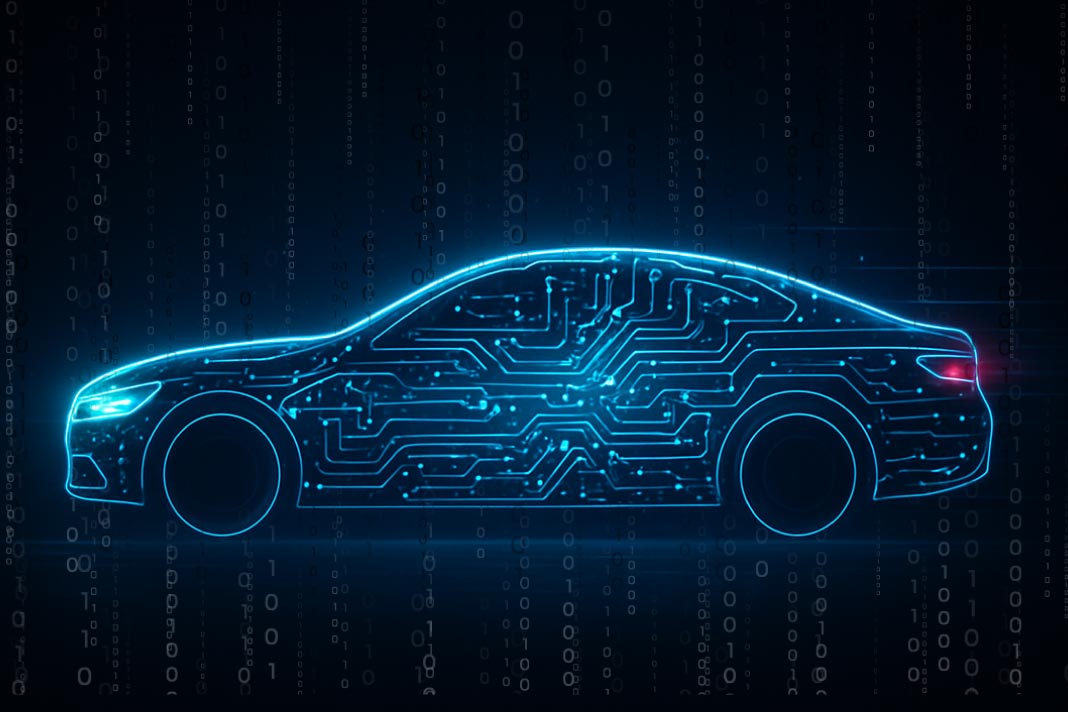Modern vehicles run on millions of lines of code, turning them into rolling computers—and prime targets for cyberattacks. Learn how automakers must treat digital security as a core function.
Cars no longer run on fuel alone – they also run on code. Modern connected vehicles can contain more than 100 million lines of software, making them not just machines but rolling computers. And like any computer, they’re vulnerable to cyberattacks. As cars gain cloud connectivity for navigation, real-time updates, and remote diagnostics, they also gain exposure to cybercriminals.
The problem is, automakers aren’t ready. Their expertise has always been in accident prevention and physical safety, not in defending against digital threats. Yet the risks are mounting. A single breach could compromise sensitive driver data – or, in the case of fleets operated by companies like Amazon or the USPS, potentially disable thousands of vehicles at once.
With so much at stake, connected cars have become a prime target. The question is whether automakers can close the security gaps before attackers can exploit them.
Smarter Cars, Bigger Targets
Modern cars blur the line between transportation and technology. Millions of lines of code run everything from braking systems to entertainment apps, so each vehicle offers hackers countless potential entry points. The complexity is so great that no automaker has full visibility into every function and dependency.
Constant connectivity adds another layer of exposure. Features like navigation, traffic updates, over-the-air software patches, and streaming apps require vehicles to stay online, turning every car into a node on the internet. Like laptops or smartphones, vehicles can be scanned and exploited remotely if defenses are weak.
Integration across systems raises the stakes further. In older models, infotainment ran separately from safety functions. In today’s vehicles, digital integration means a compromise in something as minor as a music app can become a pathway to more critical controls. Security researchers have already demonstrated that vulnerabilities can be used to disable brakes or hijack steering from afar.
Risks Beyond the Car Itself
The cybersecurity problem doesn’t stop at the automakers themselves; it runs deep through the supply chain. Today’s cars depend on dozens, sometimes hundreds, of third-party software and hardware components. Infotainment systems, GPS units, telematics modules, and cloud-based applications are often sourced from different vendors. Each introduces potential vulnerabilities that must be secured and monitored.
The Patching Problem
Patching is a major challenge. While newer models often support over-the-air updates, millions of older cars still require physical service visits to get fixes, if they get them at all. Even with over-the-air updates, automakers face hurdles with vehicles that can remain on the road for a decade or more. A 2018 model may still be in use well into the 2030s, long after its software platform was designed. Keeping every generation of vehicles aligned with evolving security standards is a logistical problem the industry has yet to solve.
Data, Privacy, and Trust
Cybersecurity isn’t just about blocking hackers – it’s also about how automakers handle the vast amounts of data cars now collect. Location histories, driving behavior, and personal details entered into infotainment systems can all become liabilities if not properly secured.
Privacy lapses or data misuse erode consumer trust just as quickly as a high-profile breach. Regulators in the US and EU are increasingly treating privacy and security as two sides of the same coin. For automakers, protecting both is essential to keeping drivers confident in connected vehicles.
Closing the Gaps
Fixing the cybersecurity weaknesses in connected cars requires more than patchwork solutions. Automakers need to treat every vehicle as part of a larger digital network, in which security is designed in from the start and maintained throughout the car’s lifespan. That begins with building security by design – integrating protections into vehicles from day one rather than bolting them on after release.
It also means monitoring in real time. Just as banks and cloud providers rely on constant threat detection, automakers will need dedicated security operations centers and engineering teams to identify vulnerabilities and respond quickly when new exploits emerge. That requires building systems to continuously scan vehicle software, analyze network traffic for anomalies, and deploy patches the moment flaws are detected. Software-based solutions that make use of a vehicle’s existing signal data – sometimes called virtual sensors – can extend this visibility even further. By detecting abnormal behavior across entire fleets without requiring new hardware, they provide scalable insights while keeping added complexity and costs low.
The supply chain must also be tightened. Automakers depend on hundreds of third-party components, and every contract should come with strict requirements for secure code and timely updates. No single company can do this alone, which is why collaboration with cybersecurity specialists, suppliers, and regulators will be essential to raising the industry’s baseline for safety.
The promise of connected cars is enormous, but so is the risk. Unless automakers treat cybersecurity as a core function on par with crash safety, consumer trust in connected and autonomous vehicles could collapse.



